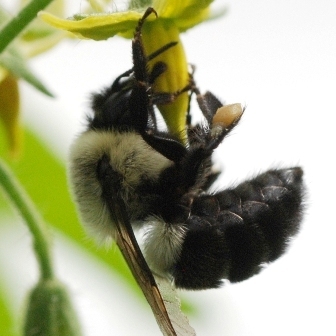
Keep Them Cool!
Bumblebees need to keep a cool head to be able to function optimally and carry out their valuable pollination work.
‘We go a long way to ensure that growers have the best colonies of pollinators and that they reach their destination in optimal condition and ready to carry out their work’, says Remco Huvermann, Pollination Manager at Koppert. ‘There are, however, local climatic and environmental factors which can have big impact on pollination performance. That is the reason why we developed best practices guidelines to limit or prevent these influences.’
The Natupol hives are designed in such a way that the bumblebees are able to influence the microclimate in the hive in the most efficient way. The hive itself protects the colony against radiant heat and provides natural ventilation throughout the hive. This allows for adequate fresh air and keeps humidity at the right level. A protective layer in the bottom of the Natupol box acts as insulation and reduces fluctuation in temperature in the hive.
‘The Natupol box ensures the best conditions possible to maintain a constant brood temperature so that the bumblebees do not put unnecessary energy into controlling the hive’s micro-climate. It gives them more time for pollination,’ says Remco Huvermann. ‘The effect of the outside temperature on the hive can be great however. A well visible, shady location near the ground in amongst the crop can make a difference of 4-15°C / 39.2-59°F in the hive. This can ensure longer pollinations hours and prevent damage to the hive.’
Hive location makes the difference
Koppert’s guidelines advise growers to protect the hive against direct sunlight and to place it in a cool spot. For extreme ambient temperatures, the best practice is to help the colonies to keep cool during the hottest times of the day and allow them to pollinate in the early morning and evening. As long as the flowers are open and receptive, pollination can take place during these times of the day.
For all recommendations go to: